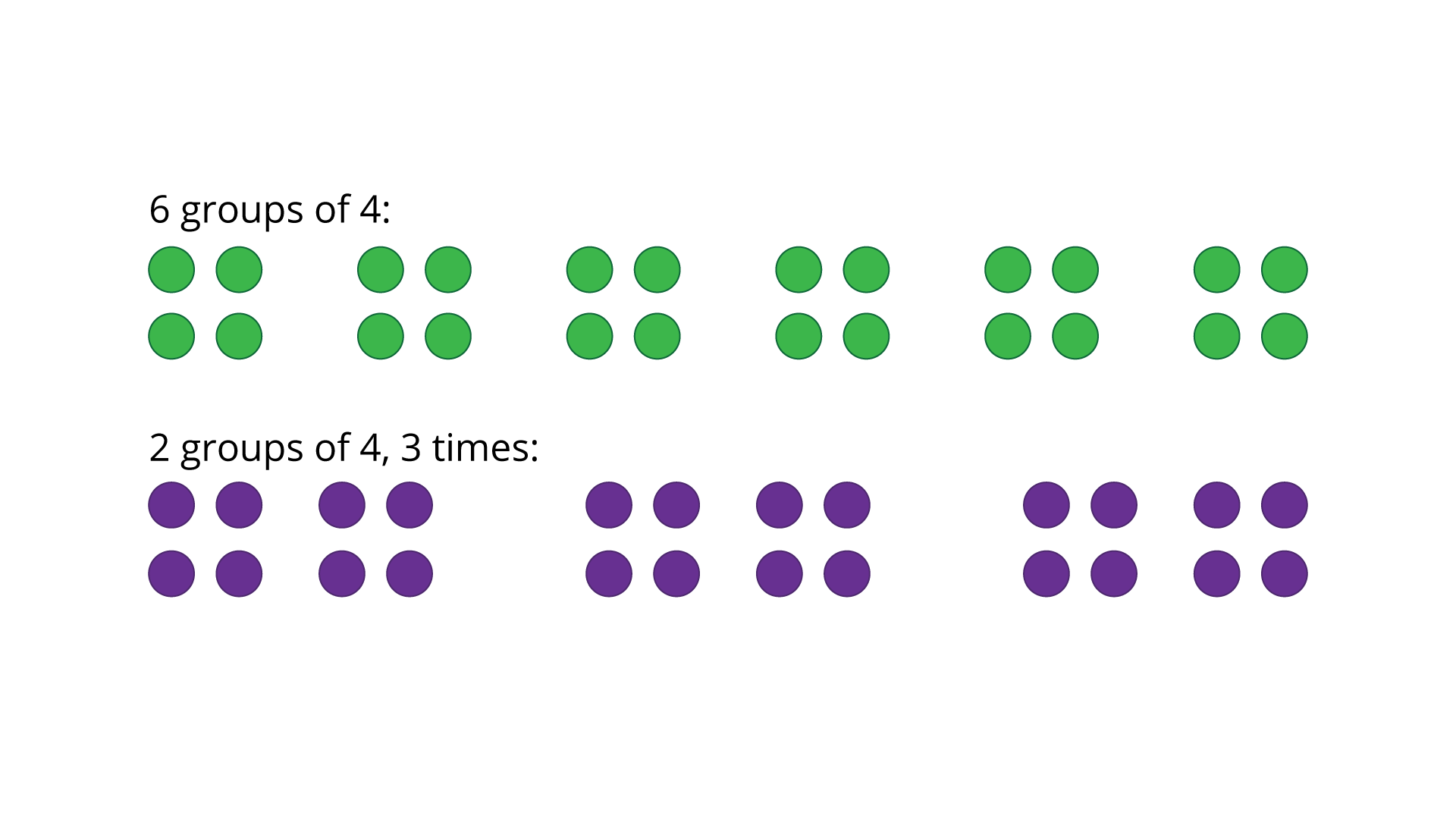Ask Marian
What is the difference between capacity and volume? Why do students learn about capacity so much earlier than they learn about volume?
Capacity and volume are very similar; in fact, in the US, the study of capacity is called the study of liquid volume. The usual distinction between the two is that capacity describes how much something holds, and volume tells how much material it takes to make a solid object. Since capacity can be addressed using direct comparison, it is usually covered earlier than volume, which is difficult to address without using units.
For example, it is clear that one container must hold less than another if you can fill one, pour its contents into a second one, and still have room for more in the second container. But it’s harder to explain that it takes more material to build one object than another without talking about how many units of material are needed to build an object.
What’s the best way to explain why you can multiply by 6 by multiplying by 2 and then by 3?
I think I would encourage students to think about multiplying by 6 as showing an amount 6 times.
If I showed it twice instead (i.e., multiplying by 2) and tripled what I was showing (i.e., multiplying by 3), then I would have 6 copies of what I started with. For example, if I want to show 6 × 4, I might have 6 groups of 4 counters. Or I could take 2 groups of 4 counters, which would be 8 counters, and triple those 8 counters, so it would also be 6 groups of 4 counters.

What is the difference between precision and accuracy in measurement?
Being accurate when measuring means measuring carefully and correctly. For example, when measuring length, it’s important to make sure that the object is straight and taut and that the measurement is taken using multiple copies of a unit with no gaps or overlaps.
Being precise is more about the tool you use and how exact you can be when describing the measurement. For example, if you’re using a centimetre ruler, you can’t be precise to the nearest millimetre.